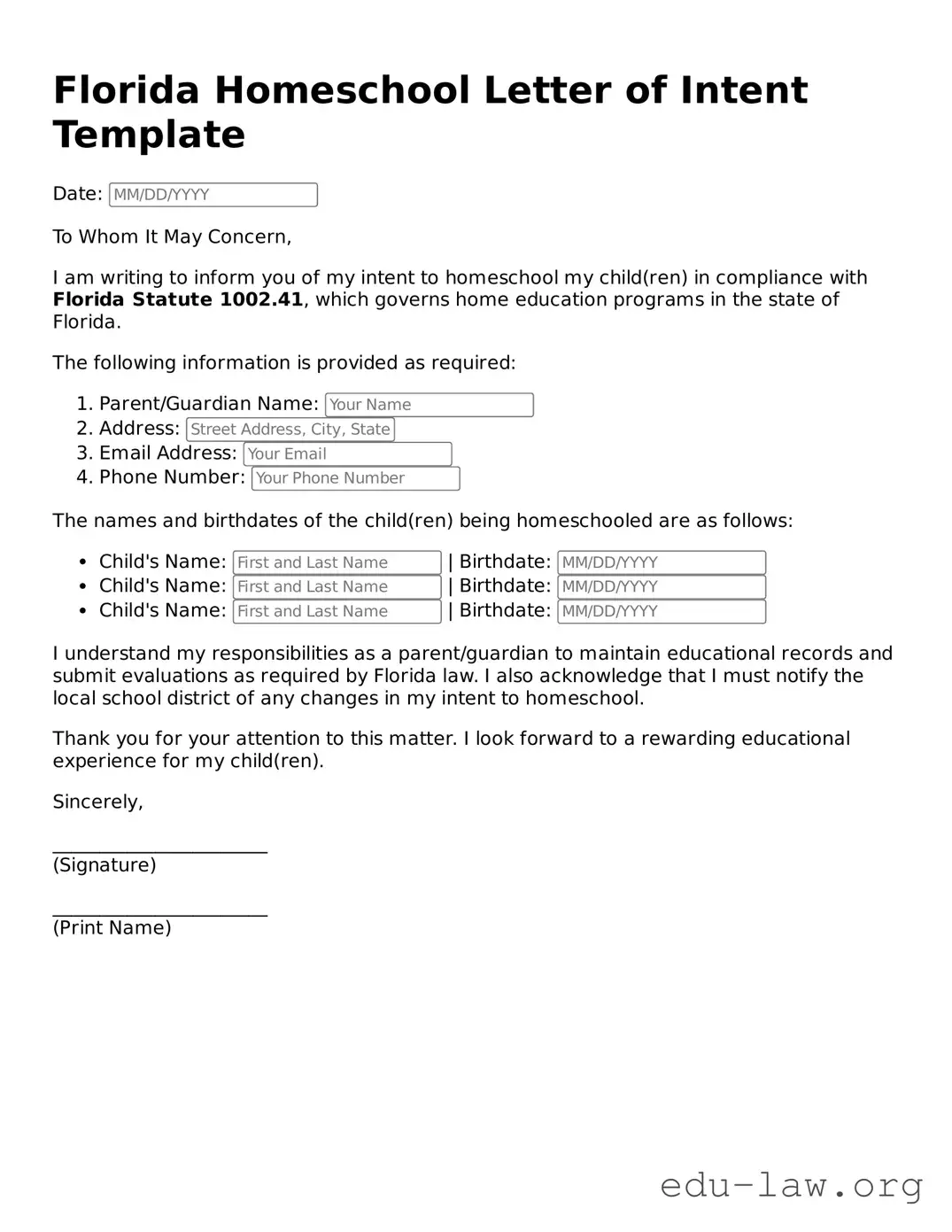The Homeschool Letter of Intent form in Florida has similarities with the Notice of Intent form often used in other states. Just like the Florida form, the Notice of Intent notifies the local district of a parent’s intention to homeschool their child. This document typically requires basic information about the student and the parent. It serves to formally declare that a parent will take responsibility for their child's education outside of the public school system.
Another similar document is the Home Education Enrollment form used in some states. This form serves a similar purpose by requiring parents to formally enroll their children in a home education program. It also usually includes details such as the learner's name, address, and the educational plan intended for the year. These enrollment forms help establish a record of families participating in home education.
The Compulsory School Age Notification is yet another document that resembles the Florida Homeschool Letter of Intent. It indicates to the school district that a child who meets the compulsory school age requirement will not be attending formal schooling. This notification often includes essential information such as the birth date of the child and the start date of homeschooling. Like the Letter of Intent, it is designed to keep the school informed and ensure compliance with educational laws.
Also similar is the Educational Philosophy Statement that some states require alongside or instead of a homeschool letter. This document articulates a parent's educational philosophy and outlines their approach to teaching their children. While not always mandatory, providing such a statement can offer clarity to school districts on how parents intend to meet educational requirements for their children.
The Home Education Annual Evaluation form represents another comparable document. This form is often submitted at the end of the academic year to demonstrate a child’s progress in their home education. Just like the Home School Letter of Intent, it serves an important role in maintaining communication with the local school district. Both documents help ensure adherence to state regulations regarding education.
The Withdrawal Form is another document that shares similarities. When a parent decides to withdraw a child from public school for homeschooling, this form notifies the school administrators of the withdrawal. It is crucial to submit this form to avoid any confusion or potential conflicts regarding attendance. Like the Homeschool Letter of Intent, the Withdrawal Form emphasizes the change in educational approach.
In states requiring a Home School Registration form, there is a clear similarity as well. This form is used to officially register a homeschool program with the local education authority. Understanding the requirements set forth by each state is vital, as this document often collects the same types of information found in the Florida Letter of Intent—family information, student details, and educational goals.
The Declaration of Intent form also echoes the purpose of the Florida Homeschool Letter. It allows parents to declare their intent to provide home education in a straightforward manner, including necessary contact details and children's information. This document reinforces the parents’ choice to pursue homeschooling while keeping the educational authorities informed.
The Home Study Notification form is another document that resonates with the purposes of the Letter of Intent. It outlines a parent’s intention to conduct home studies for their child, focusing on the education and learning arrangements they plan to make. This form often goes hand-in-hand with explaining how the parent intends to meet the state’s educational requirements.
Finally, the Proof of Enrollment form is akin to the Homeschool Letter of Intent. This form is used to demonstrate that a child is actively enrolled in a homeschool program. It often requires submission to the school district and helps in verifying that the family meets state homeschooling regulations, much like the initial intent form.
